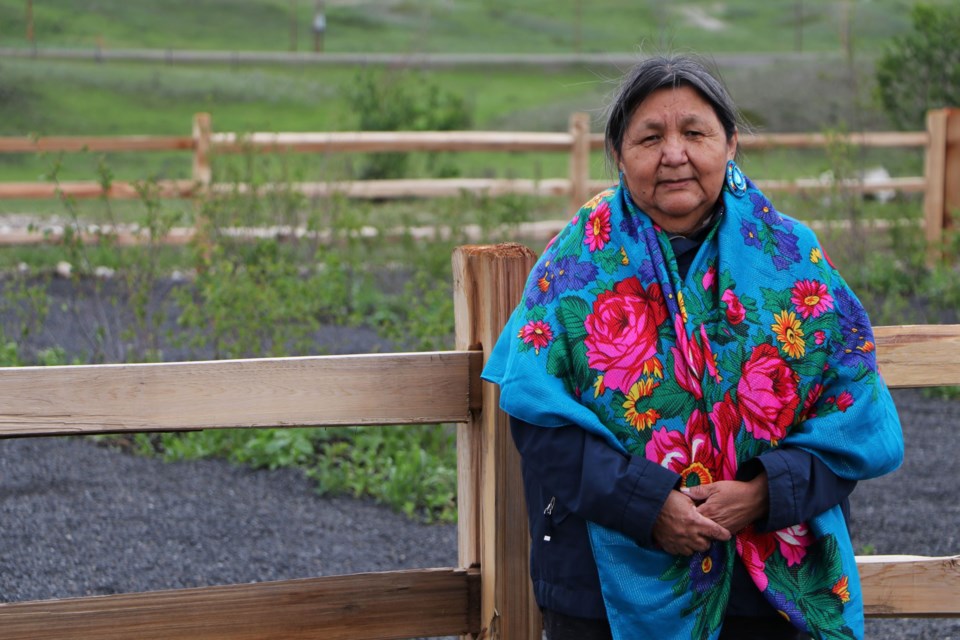Rows of berry shrubs recently planted near the Wesley Elders Lodge in Mînî Thnî mark the beginnings of a new traditional healing space taking shape.
In the coming weeks, Stoney Nakoda First Nation community members will have a place they can go to gather, or be alone, to tap into their traditional practices – including harvesting berries – in the name of healing the wounds of the community and reconnecting with their Indigenous roots.
“Our young people have died over the past few years from opioids and the drug epidemic,” explained Stoney Health Services cultural liaison Jeanette Wildman. “We’ve lost a lot of young people from the reserve, including our young mothers.
“That’s touched me a lot because I’ve lost two of my grandsons in this crisis … the youngest was 16. We really need to be able to heal from what’s happened to our people and to have somewhere we can go to find serenity.”
Wildman approached community pipe holders earlier this spring about the vision for the space, which will include a sweat lodge, smokehouse, fire ring, two teepees, a U-pick berry farm and a medicine wheel.
It’s being funded mainly by Canadian Roots Exchange’s CREation Community Grant with about $10,000 coming from Stoney Health Services.
The primary goal of the $90,000 project is to create an area where people can heal their personal and collective traumas by reconnecting with who they are as Indigenous people.
“As we lose our traditional values, our culture – our youth are slowly losing themselves,” said Wildman. “But here, you can spend a night in a teepee or take your child or grandchild to spend the night there and show them what it’s like.
“You can use the smokehouse, sit here and pray, partake in a sweat lodge ceremony, and hopefully listen to some elder teachings.”
Wildman, who is a residential school survivor, recalls a memory of her grandmother predicting “a dark cast” over the community’s youth in the generations to come.
“That’s how I see this drug crisis we’re going through,” she said. “All of this trauma from residential schools has gone on for generations.”
Wildman said she was once faced with her own battle with addiction because of the eight years she spent at the Morley Indian Residential School, which is now the current site of the Morley Community School.
“I was an alcoholic,” she said. “And when I had my own children, I didn’t know how to say, ‘I love you,’ because I was away from my parents and that was never said to me in the school.
“This kind of thing has stretched on for too long and we need to be able to do better by our community and for our youth.”
Eventually, Wildman hopes to see youth-oriented programming held within the healing space, including traditional drum-making and hide tanning workshops.
All faiths and spiritualities will be welcome to utilize the area – a fenced-in plot of land that overlooks Mînî Thnî, the Bow River, and the Rocky Mountains. However, Wildman asserts that it’s not meant to act as a tourist attraction.
“This place needs to be respected,” she stressed, adding the sweat lodge and medicine wheel are of particular spiritual importance.
Construction of the area is expected to finish sometime in July, but the grand opening will take place in August, at which time a name will have been chosen to represent its intent – to promote healing, cultural identity and togetherness.




